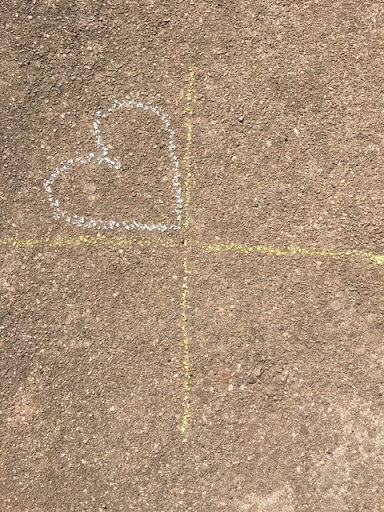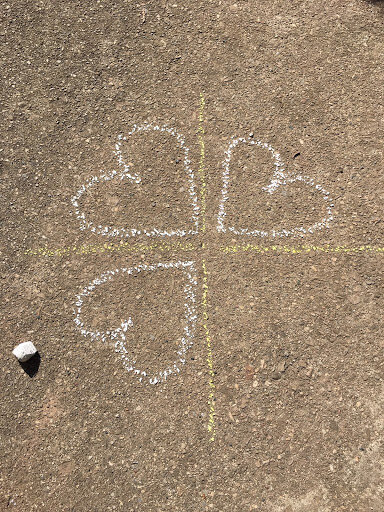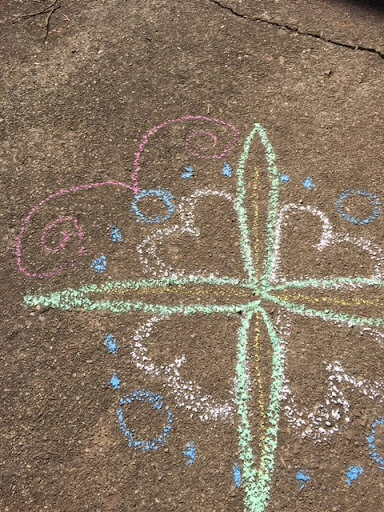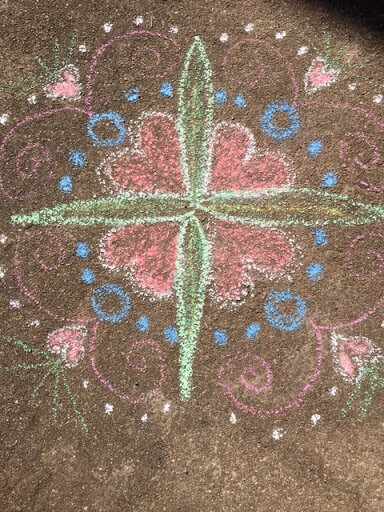Before joining the IFF community Amy worked as a Recreation Therapist in Mental Health. With her new found extra time at home she’s been going through some of the tools she used to promote Mental Health. She’s a big believer in the benefits of a mindfulness practice. One tool that she’s found to be very successful and accessible is Mandala Meditation.
Mandalas are an ancient art form dating back to Tibet over 2,500 years ago, used to induce a meditative state, reduce stress and promote relaxation. It’s an active meditation that uses simple movement to strengthen focus. The repetitive motions act as a reminder allowing attention to shift back to the moment and to your intention during the meditation practice.
Mandalas can be done in a wide variety of mediums. Tibetan monks create elaborate ones in coloured sand that later are swept away as a reminder that nothing is permanent. You may choose any material available at your home: pencil crayons, pens, markers, paint, stones… The example shown is done in my daughter’s sidewalk chalk.
For the purpose of this meditation there are no rules for how to go about creating a mandala just that you approach the act with self compassion and curiosity allowing some imperfections in your design without a set plan of what you want the mandala to look like, see where it leads you. The steps below are just suggestions to get you started. Your mandala doesn’t need to look anything like the example or be symmetrical. You may choose to work from the outside in, whereas I often prefer to work from centre out.
To begin, set up a space and the supplies you will use. Intentionally make the space special or sacred for you. That might mean lighting a candle, putting on relaxing music, wiping the work area down, or just moving all the lego to one side of the living room. It’s not about what you do to set up the space just that you’re creating some small ritual to set the tone.
When you’re ready, start as you would for a physical yoga practice: find a comfortable and balanced seat, become aware of your breath as you allow the body to relax. Take a few rounds of breath as you arrive into the space and set an intention for your meditation practice. Give your intention a word or mantra that you can repeat to yourself while you create the mandala.
Step One
Choose your starting medium/colour. You may choose to work all in one colour or pencil then go over to thicken lines and add colour.
Step Two
Visualize a centre to the area where you will be creating the mandala. You could also lightly sketch two intersecting lines to act as a guide.
Step Three
Add a pattern or shape to one quadrant then repeat in the other three sections.
Step Four
Work slowly as you continue to add on layers. Stay connected with the sensation of your breath and revisit your intention or mantra as you go. Allow the artwork to inspire the shapes and patterns you add.
Step Five
There are no rules. Allow yourself to have fun with the concept and see where the inspiration leads you.
Another option that can also have relaxing and meditative benefits would be to find a mandala template (many free printables and colouring book variations can be found online) and colour one in. “The fact that colors have psychological significance and that meditating on them can heal old, emotional wounds is the basis of Dr. John Diamond's breakthrough in Meditative therapy. According to Dr. Diamond and Dr. Luscher, colors have deep psychological significance that go back to our primitive, unconscious roots.” (Mary Desaulniers, 2006)
More About Amy
Amy’s interest in yoga began in 2009 while working in Mental Health as a Recreation Therapist. After reviewing the research on the benefits of yoga for depression and anxiety, Amy decided to learn more by taking some classes. It didn’t take long for her to see the transformative power of yoga in herself and want to share this with others. She became certified to teach yoga in 2012 through Octopus Garden Yoga Center, and is also a Certified Senior Fitness Instructor through the Canadian Center for Activity and Aging. She believes yoga gives us the power to focus our attention on what we want to manifest in our lives and that in turn makes us limitless. With a mindful approach to both stillness and movement, she encourages students to cultivate the deep contentment that is available by being present, curious, and accepting.






